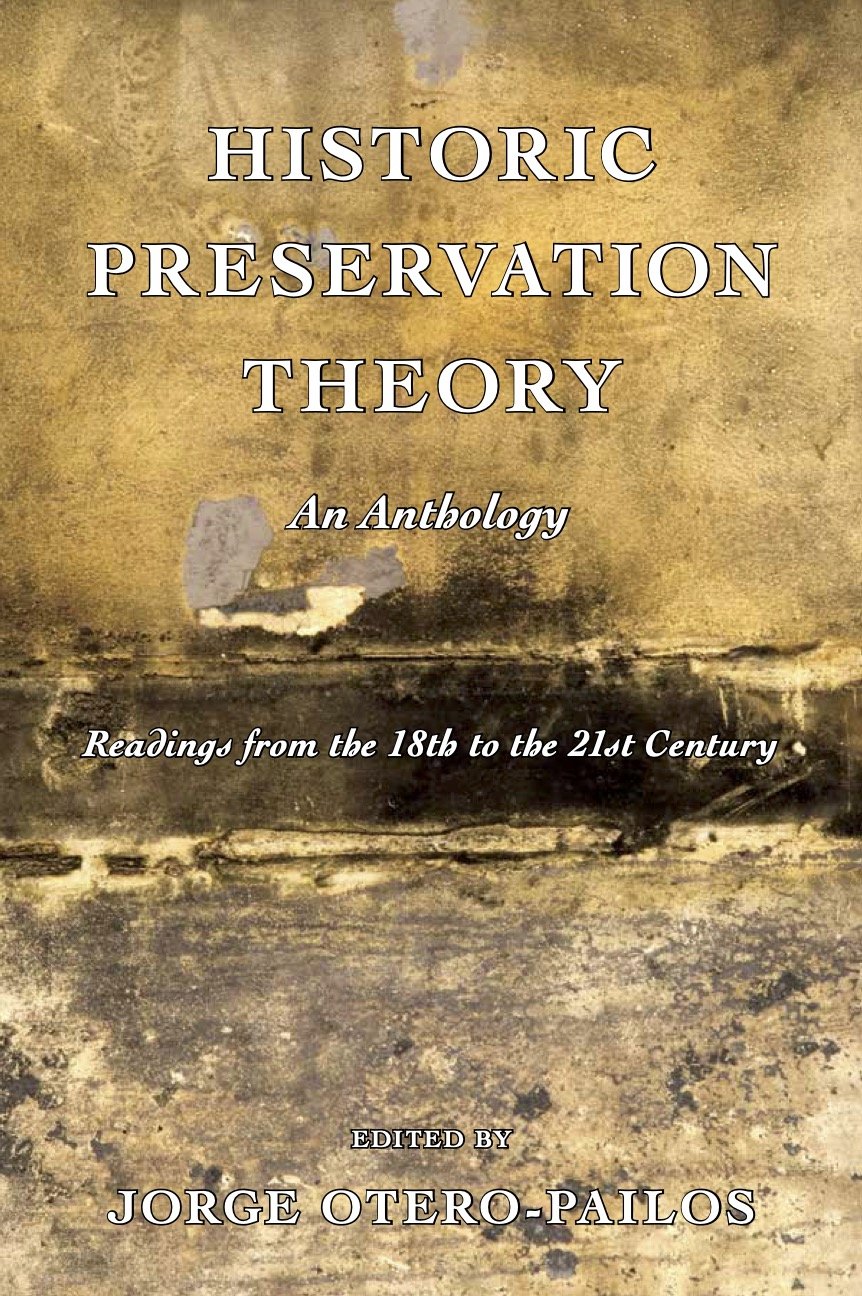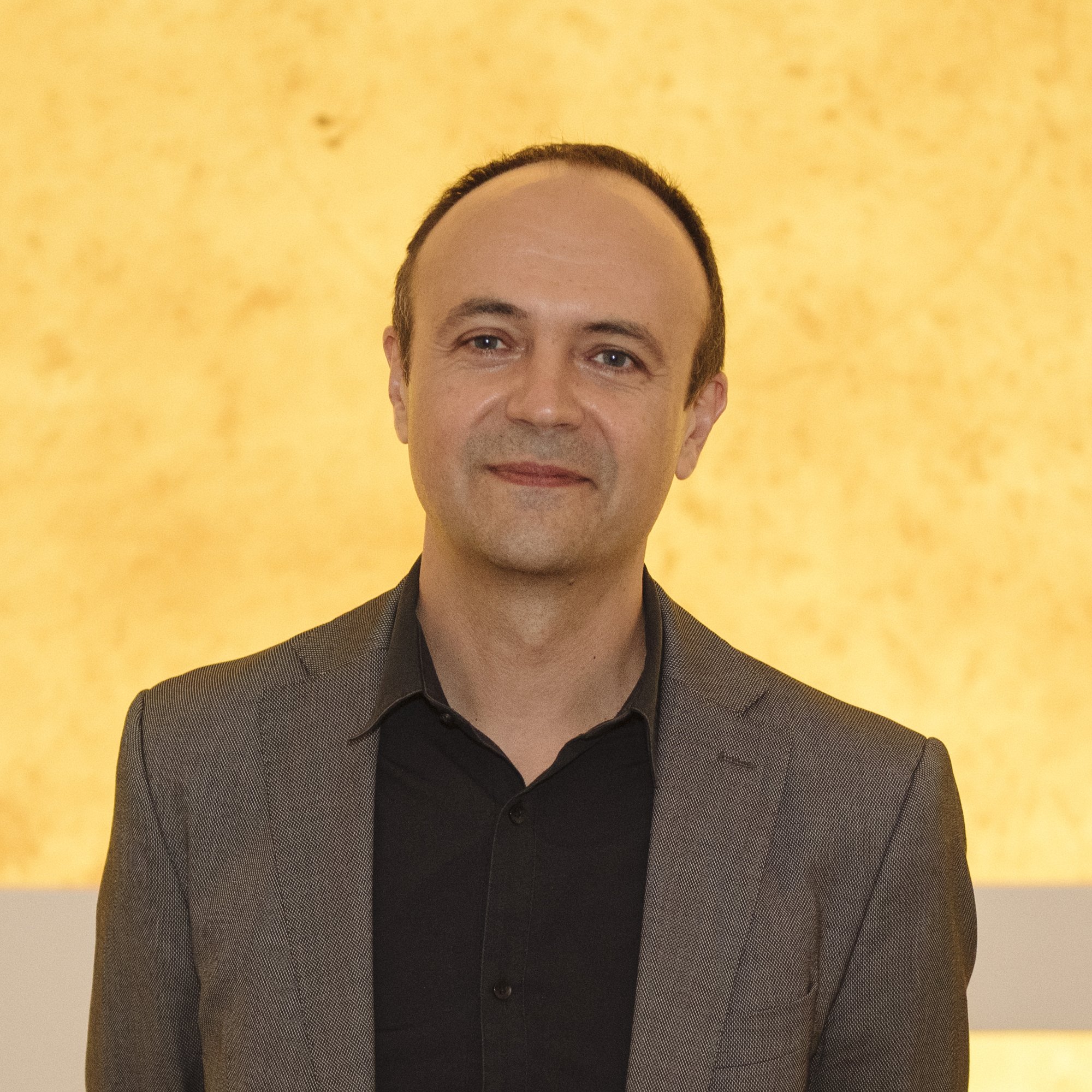“Once relegated to the margins, preservation theory is back at the center of architectural discourse as we urgently answer the call to care for the existing built environment. This carefully researched anthology is a treasure trove of ideas from which to reimagine architecture for the twenty-first century. We owe this generous and extraordinary assemblage of primary sources, from inside and outside the discipline, to the outstanding professor and director of Historic Preservation at Columbia University, Jorge Otero-Pailos. Very much a must-read! ”
Historic Preservation Theory: An Anthology
Readings from the 18th to the 21st Century
Edited by Jorge Otero-Pailos
Historic Preservation Theory is the first English-language anthology of historic preservation theory with an international perspective. It includes close to 100 essential texts spanning the discipline's history of thought from the Enlightenment to the present, each with a critical introduction by the editor. Unique in its geographic and temporal breadth, it shows how ideas stemming from disciplines such as jurisprudence, architecture, art, planning, psychoanalysis, philosophy, and many others were woven together over time into what we now call historic preservation. Historic Preservation Theory, An Anthology: Readings from the 18th to the 21st Century will be published by Design Books on October 1, 2022 ($70/ paperback; 608 pages).
This indispensable new resource facilitates the comparative study of influential thinkers and related schools of thought from the United States, the Cherokee Nation, China, France, Germany, Haiti, the United Kingdom, Russia, Algeria, Norway, Sweden, Palestine, Austria, India, Czech Republic, Slovakia, Spain, Italy, Greece, Egypt, Mexico, Brazil, Australia, and more. Alongside canonical texts such as John Ruskin's "The Lamp of Memory" (1849) and Eugène-Emmanuel Viollet-le-Duc's "Restoration" (1854), the anthology expands the canon to include a wider body of preservation knowledge produced internationally. It begins to break down the disciplinary, nationalist and linguistic barriers that have limited the study of preservation theory and includes many first-ever English translations of foundational texts such as : Henri Gregoire's "Report on the Destructions Brought About by Vandalism, and on the Means to Suppress It" (1794), which not only coined the word "vandalism" but also served as the intellectual impetus for the creation of a national heritage protection bureaucracy under France's revolutionary government; Georg Dehio's "Monument Protection and Monument Preservation in the Nineteenth Century" (1905), which shaped modern preservation in German-speaking countries; Gustavo Giovannoni's "The Theory of Pruning" (1931), which changed the paradigm of how to modernize historic centers in Italy; and Liang Sicheng's "Why We Must Research Chinese Traditional Architecture" (1944), one of the founding essays of modern preservation in China.
The anthology is arranged chronologically and includes a general introduction as well as an index of authors for ease of reference. Jorge Otero-Pailos has written cogent introductions to every text, providing the necessary context to texts often written decades or centuries ago, in a distant place or culture.
About the Author
Director and Professor of Historic Preservation at Columbia University’s Graduate School of Architecture, Planning, and Preservation, Jorge Otero-Pailos is an architect, artist, and theorist specializing in experimental forms of preservation. He is the founder and editor of the journal Future Anterior, co-editor of Experimental Preservation (2016) author of Architecture’s Historical Turn (2010) as well as a contributor to scholarly journals and books including the Oxford Encyclopedia of Aesthetics and Rem Koolhaas’ Preservation Is Overtaking Us (2014). Jorge Otero-Pailos is a member of the Academy of Arts and Sciences of Puerto Rico, and has received awards from major art, architecture, and preservation organizations, including the Kress Foundation, the Graham Foundation, the Fitch Foundation, the Canadian Center for Architecture, UNESCO, and the American Institute of Architects. He studied architecture at Cornell University and earned a doctorate in architecture at M.I.T.
Jorge Otero-Pailos’s work as an artist has been commissioned by and exhibited at major heritage sites, museums, foundations, and biennials, including Artangel’s public art commission at the UK Parliament, the Venice Art Biennial, Victoria and Albert Museum, Louis Vuitton Galerie Museum, Thyssen-Bornemisza Art Contemporary, SFMoMA, Hong Kong’s Tai Kwun Centre for Heritage and Arts, Frieze London, and the Yerba Buena Center for the Arts. He is the recipient of a 2021-22 American Academy in Rome Residency in the visual arts.
“This volume is like an ideal symposium, gathering a fascinating array of thinkers across time and disciplines and encouraging dialogue between them and with practitioners in the present. It vividly demonstrates that how we preserve and interpret historic places is rooted in and requires critical thinking and creative inquiry. And it reminds us that, like places themselves, historic preservation theory has evolved over time in ways that are powerfully instructive and inspiring.”
“Jorge Otero-Pailos’s collection is much more than a simple anthology of texts, instead charting a revelatory new history of historic preservation theory and philosophy through comprehensive and carefully selected original readings, some of which appear in English translation for the first time. This book is an essential volume for academics, educators, students, and practitioners alike.”
“The most extensive anthology on heritage preservation available today, covering three centuries of intellectual advancements on the meaning of heritage in social, cultural and political life. An indispensable reader.”
“This important anthology has the double achievement of showing preservation theory as a vigorous field of knowledge and, at the same time, as a fertile intellectual ground for emerging experimental preservation approaches, discourses, and sensibilities to come.”
“A deftly curated collection of readings that simultaneously clarify, complicate, challenge, and robustly expand our understanding of Historic Preservation discourse and its situated histories.”
“This is an essential, needed anthology tracing the development of approaches to and theories about preservation. It will be required reading for my graduate students.”
“A generous gift from Jorge Otero-Pailos, compiling the most significant theoretical texts on historic preservation, duly introduced by an enlightening note on each author and their writings. Experts, professors, and future generations of students will thus benefit from these 100 indispensable assessments on heritage from varied times and cultures.”
“This anthology of historic preservation theory is remarkable for the timeliness of its purposes, the breadth of its scope, and the depth of the texts selected by editor Jorge Otero-Pailos. Covering material from the United States to China and from Sweden to Brazil, it provides invaluable information for anyone interested in the subject.”
“A much needed and highly original anthology of the global culture of conservation since the early ages. The academic soundness of the material is well curated by an artistic sensibility and a passion for architectural heritage. The choice of the authors is especially accurate about contemporary debates that become crystal clear for the lay reader.”
“In architectural conservation we look at stones—but we are interested in people. Places of different times and cultures tell us about the vast diversity of human values and ambitions, thus enabling us to see where we stand ourselves. Jorge Otero-Pailos‘s anthology provides stimulating input for the continuing discussion of the thoughts and motivations that guide our discipline.”
“This anthology is a significant step in initiating a global discourse, accommodating both diverse perspectives and common influences within the discipline of historic preservation. It is an important resource for those seeking a broader understanding of historic preservation theory and its development over centuries.”
“Jorge Otero-Pailos offers us an inclusive framework of invaluable writings from the diverse theoretical schools that underpin historic preservation and provides a chronologically legible path of its development into a discipline that is no longer centered on any single geocultural value or language.”
HISTORIC PRESERVATION THEORY: An Anthology
Edited by Jorge Otero-Pailos, published by Design Books 2022
($70 | paperback | 608 pages | 6 x 9 inches | ISBN: 978-0-578-54714-5)
Design Books are distributed by National Book Network (NBN)

